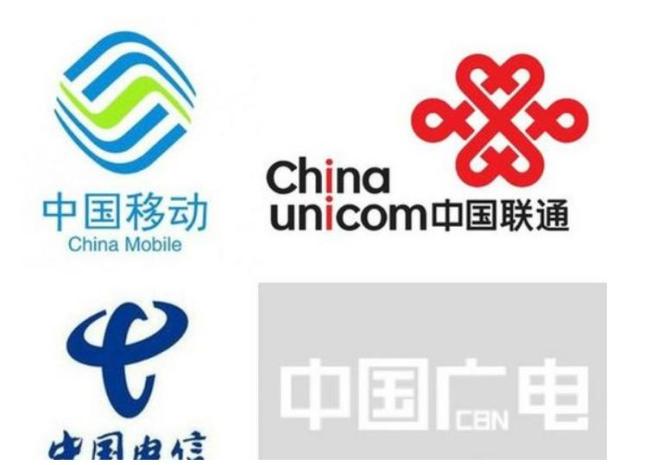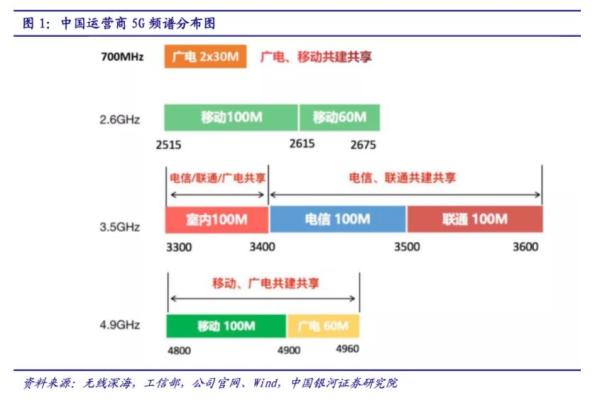Spectrum analysis of the four major domestic 5G operators, who has the best resources?

As we all know, starting with 5G, the country has changed
from a large operator to four major operators, and China Radio and Television
(China Radio and Television Network Co., Ltd.) joined in and obtained a 5G
license.
As we all know, starting from 5G, the country has changed
from a big operator to four big operators. China Radio and Television (China
Broadcasting Network Co., Ltd.) joined in and obtained a 5G license.
So let’s analyze today, what kind of spectrum have these 4
5G operators obtained, and who has the best resources and has the most
advantage?

First, as shown in the figure below, the current domestic 5G
spectrum can be divided into four frequency bands. The first part is 700MHz
here, 60M bandwidth; the second part is 2.6GHz here, 160M bandwidth; the second
part is 3.5GHz here, 300M bandwidth; and 4.9GHz here, 160M bandwidth.
At 700MHz, the broadcasting and television and mobile
co-construction and sharing, both parties can use the 60M bandwidth, due to the
low frequency, this part of the signal coverage is very far, but the network
speed will not be very high, can only be used for large-scale coverage.

Around 2.6GHz, there is a bandwidth of 160M, this part is
exclusive to mobile, the frequency of this part is much higher than 700M, so
the speed will be much faster, but the coverage will be smaller.
Then in 3.5GHz, there are 3 bands of frequencies, among
them, from 3300GHz to 3400GHz, which are shared by China Telecom, China Unicom,
and Guangzhou, for 5G coverage in the air, 3400GHz-3500GHz, 100M is used by
Telecom, and 3500GHz-3600GHz is used by China Unicom.
In fact, the frequency that is most used internationally is
also the 3.5GHz stage frequency, which is also recognized as the highest
quality 5G spectrum resource. In 4.9GHz, mobile has a bandwidth of 100M, and
radio and television has a bandwidth of 60M.
It can be said that China Mobile has three spectrums of
700MHz, 2.6GHz, and 4.9GHz. The bandwidth is the largest, but the capacity is
large. However, the spectrum is scattered and the construction is relatively
difficult. At present, the international mainstream is 3.5GHz, which is
obtained by China Mobile. The spectrum is relatively less mainstream.
Radio and TV have newly joined in, with 700MHz, 3.5GHz
indoor coverage, and 4.9GHz spectrum. The same problem is that the spectrum is
scattered. This is relatively difficult to build, and it has experience in
building and operating mobile networks, so it is challenging. It's also very
big.
The spectrum around 3.5GHz obtained by China Telecom and
China Unicom is the best and quite concentrated. Relatively speaking, the
resources are the best, but the bandwidth is not much and the capacity is
small.
It can be seen that if you insist on who has the most
advantages in resources, it is theoretically telecommunications and China
Unicom, because the spectrum is not scattered, and it is the most mainstream
spectrum in the world. The disadvantage is that the bandwidth is small, but if
it only serves the current more than 300 million users, It's quite enough.